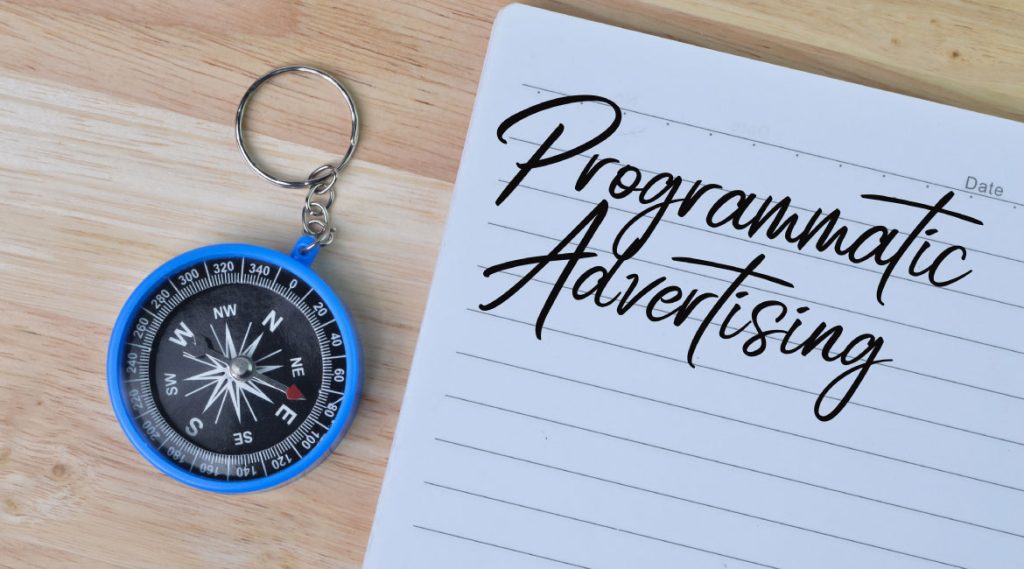Top 5 Facebook ad features every local business should use

Your Facebook ads can be valuable lead generators—if you do it right
It’s true – Facebook is not what it used to be. The social media platform is no longer the first place people go to update their friends and family on what they have done or where they have been. But the social media platform is far from irrelevant, and its advertising platform can most definitely still work for local businesses.
That’s right – Facebook ads still work. They offer many targeting options and ad formats, and can reach an incredibly large and diverse audience. They offer precise targeting capabilities and a vast user base that can help boost your brand awareness and drive sales. Overall, Facebook’s modeling and AI have grown rapidly in the past few years, and many who use the platform report good and even excellent ad performance. That said, you still need to optimize your ads to get the most from your spend.
Getting the most from your Facebook ad hinges on five key features:
- Audience targeting
- Location targeting
- A/B ad testing
- Custom video ads
- Better calls to action.
This blog looks at those in detail. Let’s get started!
Audience targeting for Facebook ads
The ability to precisely target the right audience in your Facebook ad is key to the success of your campaign. Facebook, with its extensive user base and robust advertising platform, provides businesses with a suite of tools to tailor their messages to specific demographics. Let’s look at Facebook ad audience targeting and see how your local business can leverage this feature to reach your ideal customers.
Demographic targeting
At the heart of Facebook’s ad targeting capabilities lies the ability to hone in on specific demographics. Businesses can define and target their audience based on age, gender, education level, relationship status, and more. Whether your business is promoting products for a specific age group, relationship status, location, passion, or history, demographic targeting allows for laser-like precision.
For instance, a clothing store looking to sell a new line of clothing can narrow its audience to young adults aged 18-24, ensuring that the message resonates with the demographic most likely to be interested in their products.

Location-based targeting
Local businesses in particular can benefit from Facebook’s location-based targeting. Whether you run a neighborhood coffee shop or a fitness studio, your business can define a specific radius around your physical location to reach potential customers in the vicinity of your choosing. This feature is especially powerful for driving foot traffic and fostering a connection with the local community.
For example, a small bookstore using location-based targeting to reach users within a five-mile radius. This can be done to promote upcoming book signings, in-store events, or exclusive discounts to people who have been identified as both interested in books and living close to the store.
Interest-based targeting
Understanding the interests of users is key to creating relevant and engaging advertisements. Facebook allows your business to target users based on their interests, hobbies, and activities. This means that ski shops can target skiers, Honda repair garages can target Honda owners, and hobby stores can target hobbyists.
For instance, a tour company can target individuals who have expressed an interest in adventure sports, hiking, or exotic destinations. By tailoring their ads to these specific interests, the tour company can capture the attention of users who are more likely to be enthusiastic about their offerings.
Behavioral targeting
Facebook’s behavioral targeting allows your business to reach users based on their behavior online and their interactions. This can include purchasing behavior, device usage, and engagement with specific types of content. By learning about these behavioral insights, your business can actually predict the intent of your audience and tailor the ads accordingly.
For example, if you are a local electronics retailer, you can target users who have recently searched for smartphones or who have a history of online tech purchases. By doing this, you can launch ads that push the latest smartphone models or broadcast exclusive discounts that cater to the specific interests and behaviors of your target audience.

Custom audiences and lookalike audiences
One of Facebook’s most powerful features is the ability to create custom audiences based on existing customer data. Your business can upload its customer lists and allow Facebook to match those records with existing users on the platform. This enables you to target your ads specifically to individuals who have already shown an interest or made a purchase.
Facebook’s Lookalike Audiences feature takes this a step further by identifying and targeting users who share similar characteristics and behaviors with your existing custom audience. This powerful tool allows your business to expand its reach to new yet highly relevant potential customers.
Precision is the key to success. Facebook’s ad audience targeting features empower your business to tailor your messages to specific demographics, locations, interests, behaviors, and even existing customers. By leveraging these tools strategically, you can maximize the impact of your campaigns, connecting with the right audience at the right time and driving meaningful engagement and conversions.
Location targeting for Facebook ads
Location targeting for Facebook ads can be a powerful tool to reach the right audience. Location targeting is a tool that allows businesses to tailor their ads to specific geographic areas in order to ensure that their messages reach a local and receptive audience. Here is how it works:
Connect with a community
If you are a local business with a physical presence, such as a coffee shop, bike store, furniture store, or spa, location targeting is invaluable. This enables your business to reach potential customers who live within a specified radius of your brick-and-mortar location. This precision is especially crucial for driving foot traffic and fostering a sense of community engagement.
By using this tool with other Facebook tools, a neighborhood bakery could promote its daily specials to users within a specific radius. By doing this, the bakery ensures that its promotions are seen by people who are not only interested in baked goods but are also geographically close enough to make a visit feasible.
Event promotion
For businesses hosting events or promotions, location targeting allows you to focus your efforts on the audience that is most likely to attend. Whether it is a grand opening, a live performance, or a limited-time sale, your businesses can target users in the immediate vicinity to maximize attendance and participation – and build excitement.
One example of this might be a local theater that uses location targeting to promote an upcoming show. By reaching users within a specific radius, the venue can create awareness about the event among just those who are more likely to attend the event since it is close by. This ensures that promotional efforts are concentrated on the audience with the highest likelihood of conversion.
Geo-conquesting
Location targeting also opens the door to a strategic technique known as geo-conquesting. This tactic involves targeting users who are close to a competitor’s location in an attempt to get them to choose you instead. By delivering compelling ads to individuals near a competitor’s storefront, businesses can strategically position themselves as an attractive alternative.
A common example of this is found, of all places, in airport advertising. Many airports will advertise to people living far outside of their immediate area, noting that they may have shorter lines, better connections, fewer delays, lower average prices easier and cheaper parking, and similar attributes.
Multi-location campaigns
For businesses with more than one location, location targeting enables the creation of tailored campaigns for each geographic area. This customization allows businesses to account for regional preferences, cultural nuances, and specific offerings at each location.
A restaurant chain, for example, could run separate location-targeted campaigns for each location. This approach would allow the business to highlight unique menus, regional pricing, differing hours, regional specialties, and more – ensuring that the messaging resonates with the particular interests and needs of the local audience.
Seasonal and local events
Location targeting is particularly effective when businesses align their ads with local events or seasons. This could mean promoting beachwear during the summer or hot winter beverages during colder months. In short, this tool allows businesses to adjust their messaging to capitalize on regional trends and preferences.
For example, a large regional outdoor equipment retailer could use location targeting to promote camping gear in areas with popular camping destinations and skis in places with winter resorts.
Location targeting is a versatile and strategic tool for businesses. It could be used to drive foot traffic, capture a nearby audience for events, compete with rivals, tailor messages for multi-location campaigns, or align with seasonal and local trends.
Facebook A/B ad testing
So, you have decided to run a Facebook ad campaign. Great—but how do you know what will really work? Luckily, Facebook provides businesses with a powerful tool for refining their campaigns: A/B ad testing. This method, which is also known as split testing, allows advertisers to experiment with different elements of their ads in a process that provides valuable insights into what works best with their audience. Let’s look at Facebook A/B ad testing and how you can use this tool to supercharge your advertising efforts.
A/B ad testing: The basics
A/B ad testing involves creating multiple versions of an ad (variants) with slight variations in elements such as images, copy, calls-to-action, and targeting. These variants are then presented to different segments of the target audience so advertisers can analyze performance metrics and figure out what works the best. The insights gained from A/B testing empower businesses to make data-driven decisions, enhancing the overall efficacy of their Facebook ad campaigns.
Understand the variables
The versatility of A/B ad testing lies in its ability to assess various elements of an advertisement. Advertisers can experiment with different combinations to uncover the most compelling formula for their target audience. Common elements to test include:
- Ad copy: Experimenting with different headlines, body text, or calls-to-action to determine which messaging resonates best.
- Visuals: Testing various images or videos to identify the most engaging visual content.
- Ad formats: Trying different ad formats, such as carousel ads, slideshow ads, or single image/video ads, to understand which format performs better.
- Audience targeting: Testing different audience segments to discover which demographics respond most positively to the ad.
Define success metrics
To conduct meaningful A/B ad testing, businesses must establish clear objectives and key performance indicators (KPIs). Whether the goal is to increase click-through rates, boost conversions, or enhance engagement, having well-defined metrics ensures that the testing process aligns with overarching business objectives. In other words – know beforehand what your ultimate goal is and how you will know if you’ve reached it. This allows advertisers to draw meaningful conclusions from the test results and make informed adjustments to their campaigns.
Budget and duration
A successful A/B ad test requires a careful balance between budget allocation and the duration of the test. Allocating a sufficient budget ensures that each variant receives an adequate number of impressions to generate statistically significant results. Similarly, determining the appropriate duration prevents premature conclusions and allows for a comprehensive analysis of performance over time.

Once the A/B ad test is over, it is time to interpret the results. Advertisers should analyze performance metrics for each variant, comparing factors such as click-through rates, conversion rates, and engagement levels. Identifying the winning variant provides insights into the preferences of the target audience and informs future advertising strategies. Additionally, understanding why a particular variant performed better helps refine the overall approach to ad creation and audience targeting.
Seek continuous improvement
A/B ad testing is not a one-time thing but instead should be a continuous improvement process. As audience preferences, trends, and platform algorithms evolve, so should advertising strategies. Regularly conduct A/B tests to stay agile and adapt to changing dynamics, and to ensure that your Facebook ads remain effective and relevant.
Facebook A/B ad testing is a powerful tool for advertisers seeking optimal performance. By systematically experimenting with different ad elements, setting clear objectives, balancing budget and duration, interpreting results correctly, and embracing iterative testing, businesses can unlock valuable insights and get better results. A/B is a strategic approach that empowers businesses to stay ahead of the curve, connect with their audience effectively, and achieve sustained success in the competitive landscape of online marketing.
Custom Facebook video ads
Crafting compelling custom Facebook video ads can help you reach new customers in a more creative way. Video has high ROI, and while the effort is likely to be greater than what is needed for a print ad, this can be a smart decision.
Start by defining a clear objective, whether it is brand awareness, engagement, or conversions. Capture the viewer’s attention in the first few seconds and ensure the video is visually striking and aligned with your brand identity. Keep it concise, focusing on a singular message or call to action. Use captions for accessibility and storytelling, and especially since many users watch videos with the volume off. Test different video lengths, formats, and thumbnails through A/B testing to understand what resonates the most with your audience. Finally, incorporate a strong and clickable CTA, directing viewers to take the desired action, be it visiting your website or making a purchase.

How to write better Facebook calls to action
The call to action, or CTA, is where the rubber meets the road. This is what ultimately gets the recipient to buy, learn more, sign up, or agree to be contacted. CTAs should be clear, concise, and compelling. Start with action verbs that prompt immediate engagement, like “Shop now,” “Learn more,” or “Get started.” Align your CTA with the specific goal of your post. Create a sense of urgency or exclusivity and encourage users to act fast. Do not make CTAs mysterious – people want to know what they are getting for their efforts. Test different CTAs through A/B testing to identify the most effective ones for your audience. Keep it simple, avoid jargon, and ensure your CTA complements the overall tone and content of your post for a cohesive user experience.
Yes, Facebook is still a powerful advertising medium that you can’t afford to ignore. Facebook ads may seem simple – and indeed it is very easy to get set up and going – but don’t mistake that for the real need to be smart and tactful about how you orchestrate your ad.
Want to get started but not sure where exactly to start? Geotarget specializes in helping businesses capitalize on powerful tools like Facebook ads, with dedicated marketing professionals ready to see that your business succeeds.



